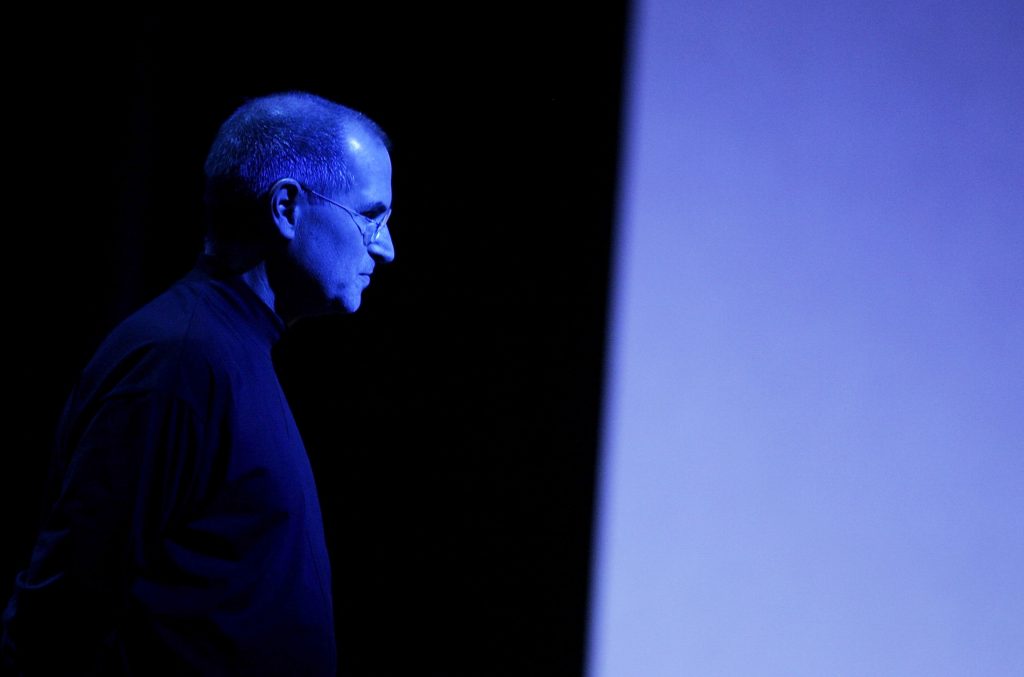
The success secrets of Steve Jobs. The mindset, philosophy and simple success strategies Steve Jobs used to create insanely great companies and the life and lifestyle most people only dream of. What you can learn from it, so you can reach your full potential and accomplish your grandest goals and dreams. This is part 1 of a 2 part documentary.

Steve Jobs was a trailblazer of technology and arguably the preeminent visionary of the 20th century. Driven by a passion for great technology and an uncanny ability to foresee what people wanted, he brought technology to the masses and unlocked the creativity of a generation. Focused on the space where the humanities and sciences meet, his mantra of “simplicity is the ultimate sophistication” drove him to revolutionize personal computers, animated movies, music and telephones.
“That’s been one of my mantras—focus and simplicity. Simple can be harder than complex; you have to work hard to get your thinking clean to make it simple.” ~ Steve Jobs
Adopted as an infant, Steve Jobs was bullied in middle school, dropped out of college and forced out of the company he founded. He could have been a failure. Instead, he became a rock star of technology and icon of innovation.
The secrets to his success included an unbounded imagination and an almost magical genius. But, perhaps his greatest asset was his “reality distortion field,” a term coined by a colleague working on the Apple McIntosh computer. It referred to a Star Trek episode where the aliens could create their own world through the sheer power of their minds. Steve Jobs had a similar quality that allowed him to convince himself and his colleagues that they could accomplish anything.
“The people who are crazy enough to think they can change the world are the ones who do.” ~ Apple Creative Team, 1997 “Think Different” Ad Campaign
When Jobs said “we are inventing the future”, he meant it. But he also knew innovators had to be able to overcome multiple failures. Much like America’s other great innovator, Thomas Edison, Jobs thought failure was just succeeding in proving what doesn’t work, and that once you eliminate what doesn’t work, you will find what does. It was this recognition coupled with his overwhelming determination that enabled him to move past the obstacles and failures he confronted along the way.
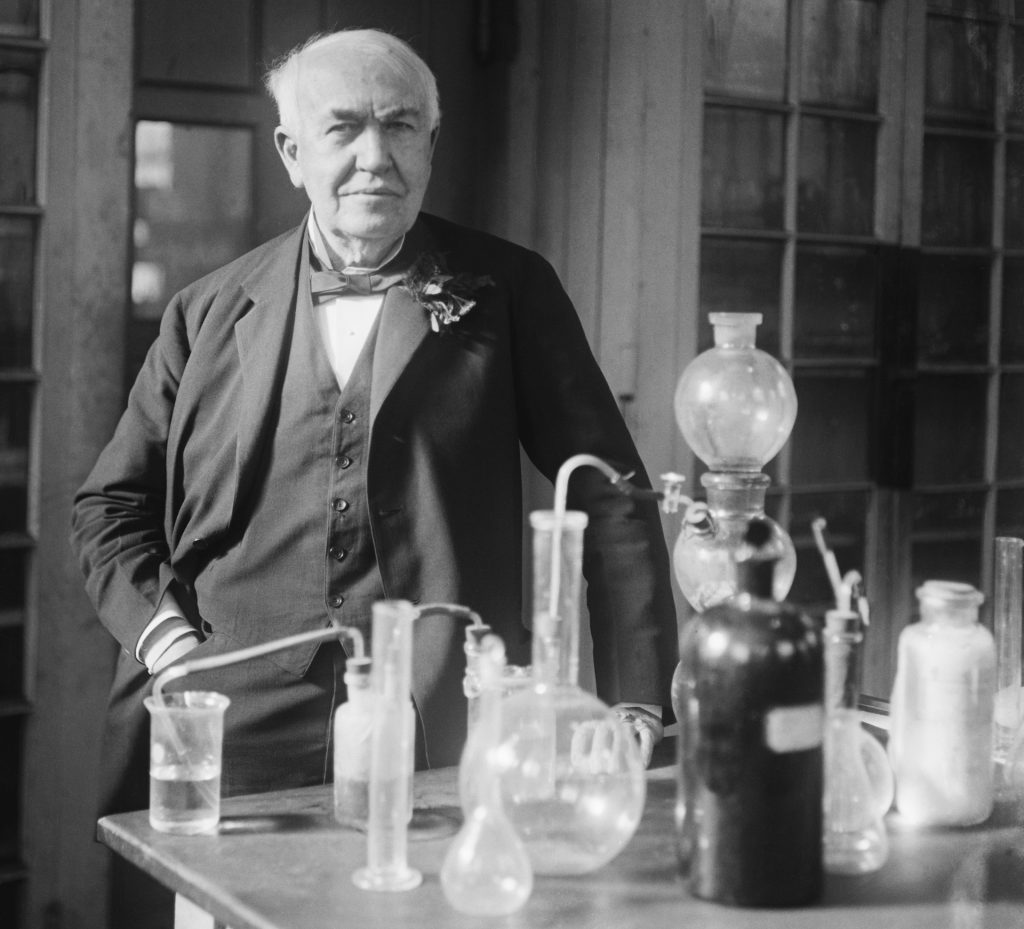
In a 1921 magazine interview, Edison explained how he dealt with failure, “I cheerily assured him that we had learned something. For we had learned for a certainty that the thing couldn’t be done that way, and that we would have to try some other way. We sometimes learn a lot from our failures if we have put into the effort the best thought and work we are capable of.”
Jobs’ first challenge in life was to overcome the stigma of adoption. His biological parents were a Syrian graduate student and American woman who met at the University of Wisconsin. Because his mother was Catholic and her father opposed her marrying a Muslim, she had Steve in secret and gave him up for adoption. Jobs’ adoptive parents reassured him at an early age that he wasn’t abandoned, but was special — and that they actually chose him. As a result, he didn’t suffer the insecurities many adopted children do.
“Knowing I was adopted may have made me feel more independent, but I have never felt abandoned. I’ve always felt special. My parents made me feel special.” ~ Steve Jobs
By the time he was 10, Jobs was a loner who didn’t respect authority and wasn’t challenged academically. He didn’t care about school until his 4th grade teacher figured out how to motivate him with bribes.
“One of the saints in my life is this woman named Imogene Hill, who was a fourth-grade teacher who taught this advanced class. She got hip to my whole situation in about a month and kindled a passion in me for learning things. I learned more that year than I think I learned in any year in school.” ~ Steve Jobs
With a new found interest in school work, Jobs excelled, skipping 5th grade and starting middle school early. Now he faced his next challenge — being bullied because he was smarter than other kids.
Instead of suffering in silence, he persuaded his parents to move to a better school district. There he attended Silicon Valley’s Homestead high school where he met Steve Wozniak — better known as “Woz” — and bonded over a shared love of practical jokes and technology.
In 1970, Jobs was drawn to the counterculture, inspired by the music of Bob Dylan and the Beatles. He smoked pot for the first time and had a free-spirited girlfriend, who turned him on to the art and literature that would later give him a sense for great design.

According to Walter Isaacson’s biography, “Steve Jobs,” one of his high school classmates described him as: “kind of a brain and kind of a hippie … but he never fit into either group. He was smart enough to be a nerd, but wasn’t nerdy. And he was too intellectual for the hippies, who just wanted to get wasted all the time. He was kind of an outsider. In high school everything revolved around what group you were in, and if you weren’t in a carefully defined group, you weren’t anybody. He was an individual, in a world where individuality was suspect.”
It would be a 1971 collaboration with Woz while Jobs was a senior in high school that planted the seed for Apple. Together, they designed and built “Blue Boxes” that could duplicate the tones that routed calls on the long distance phone network — allowing people to get free long distance calls. The Blue Box taught them they could work together, solve technical problems and actually produce something.
“And these were illegal I have to add, but in spite of that, we were so fascinated by them that Woz and I figured out how to build one. We built the best one in the world; the first digital blue box in the world. We would give them to our friends and use them ourselves. And you know, you rapidly run out of people you want to call. But it was the magic that two teenagers could build this box for $100 worth of parts and control 100’s of billions of dollars of infrastructure in the entire telephone network in the whole world… Experiences like that taught us the power of ideas. The power of understanding that if you could build this box, you could control 100’s of billions of dollars around the world, that’s a powerful thing. If we wouldn’t have made blue boxes, there would have been no Apple.” ~ Steve Jobs, 1994 Interview with the Silicon Valley Historical Association
After graduating high school, Jobs attended Reed College in Oregon but quickly dropped out because he didn’t want to spend his parents’ savings. He hung around for 18 months, monitoring classes that interested him, sleeping on friends’ floors, returning coke bottles for food money and getting free meals at the local Hare Krishna temple. Jobs reflected that much of what he stumbled into following his curiosity proved to be priceless later on.
“If I had never dropped in on that single calligraphy course in college, the Mac would have never had multiple typefaces or proportionally spaced fonts.” ~ Steve Jobs

In 1973, Jobs returned to the San Francisco bay area, got a job as a game designer at Atari and started saving money for a trip to India. He was seeking spiritual enlightenment and became a practitioner of Zen Buddhism to better understand the relationship of things in the world. He took Timothy Leary’s advice, to “turn on, tune in and drop out” and experimented with psychedelics.
“Taking LSD was a profound experience, one of the most important things in my life. LSD shows you that there’s another side to the coin, and you can’t remember it when it wears off, but you know it. It reinforced my sense of what was important—creating great things instead of making money, putting things back into the stream of history and of human consciousness as much as I could.” ~ Steve Jobs
In 1975, Jobs and Woz teamed up again, setting out to build the first Apple computer in Jobs’ garage. They wanted to make something they both wanted themselves — a stand alone desktop computer with the keyboard, screen and computer all integrated into one. At the time, computers consisted of a mainframe with individual user terminals. Their vision was to build a self-contained machine that could be used by a single person.
When the prototype was done , they showed it off at the Homebrew Computer club, a group of computer hobbyists in Silicon Valley, where it had an enthusiastic reception. Woz wanted to give it away, but Jobs convinced him they should sell it. The result was Apple Computer, named after an Oregon hippie commune where Jobs had once spent time working in the apple orchard.
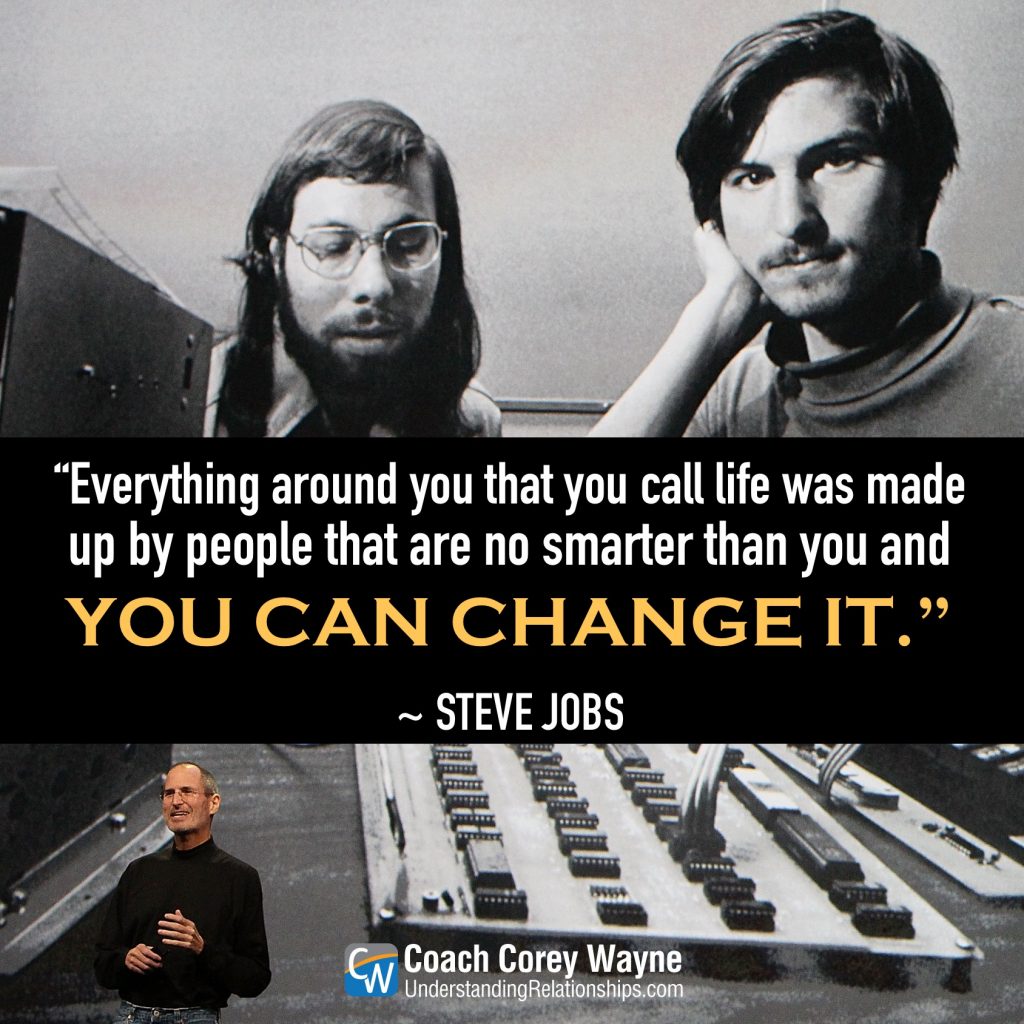
Walter Isaacson’s biography on Steve Jobs described how one of Jobs’ neighbors, a Stanford PhD named Larry Waterland, recalled seeing the first Apple computer: “Steve took me over to the garage. He had a circuit board with a chip on it, a DuMont TV set, a Panasonic cassette tape deck and a keyboard. He said, ‘This is an Apple computer.’ I said, ‘You’ve got to be joking.’ I dismissed the whole idea.”
Jobs wasn’t discouraged by his doubters or the fact he was only 21. He began working the phone — looking for investors. When he convinced several tech millionaires to invest in Apple, he broke the glass age ceiling for venture capital in Silicon Valley.
“That’s why you gotta do it young, that’s why we started Apple, we had nothing to lose, no families, no children, no houses, Woz had an old car, I had a VW van, all we had to lose was our cars, the shirts off our back, we had nothing to lose and we had everything to gain, and we figured even if we crash and burn and lose everything, the experience will have been worth 10 times the cost.” ~ Steve Jobs, 1994 Interview with the Silicon Valley Historical Association
Apple now had funding to advance Jobs and Wozniak’s vision — creating the kind of computers they believed people wanted with a user friendly graphical interface. The result was the Apple II in 1977, one of the first successful mass-produced micro-computers in the world and Apple’s first computer aimed at the consumer market.
By 1980, Apple went public in the largest stock IPO since Ford in 1956. More than 40 of Apple’s 1,000 employees became millionaires overnight. At age 25, Jobs was now worth more than $200 million.
In 1983, with Apple about to introduce its new Macintosh or “Mac” line of computers, Apple needed someone with more marketing experience to serve as CEO. Jobs targeted John Sculley, a veteran Pepsi CEO who had overseen the “Pepsi challenge” ad campaign. When Sculley declined, Jobs persisted, challenging Sculley — “Do you want to sell sugar water for the rest of your life, or do you want to come with me and change the world?”
Sculley came on as Apple’s CEO just in time for rollout of the Mac — the first computer with a graphic user interface and a mouse.
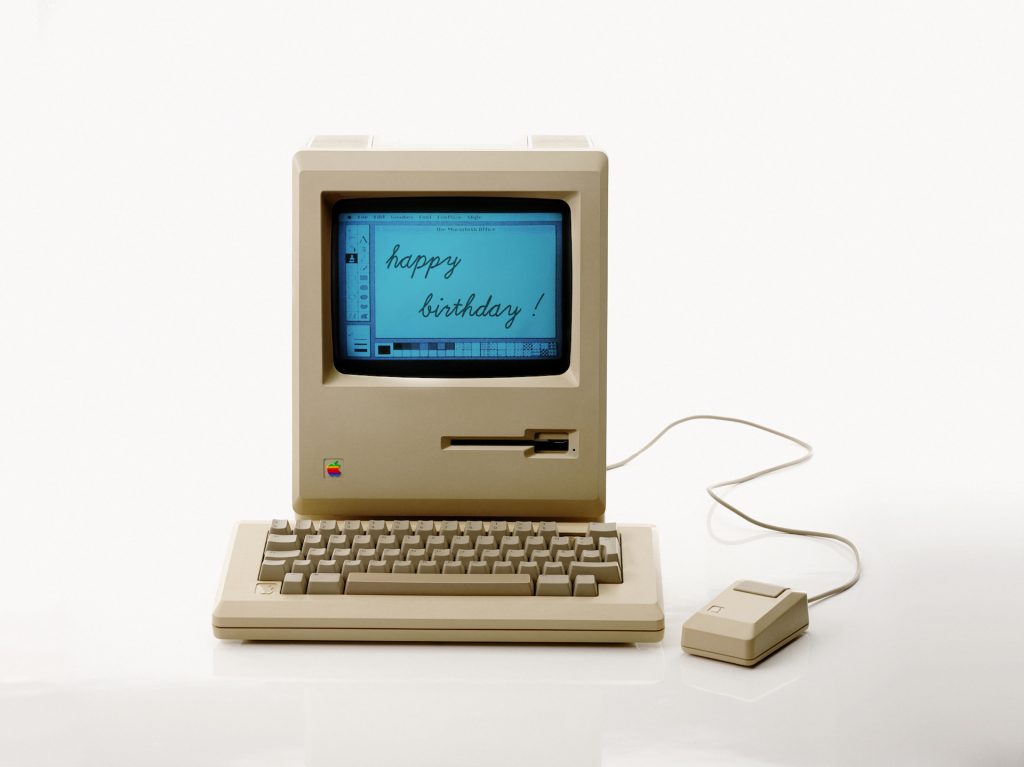
The Mac was announced to the world during the 1984 super bowl in a cinematic commercial based on George Orwell’s dystopian novel, “1984.” The message was that technology empowers the people, and the Apple Macintosh was going to “show people why 1984 won’t be like 1984.” The spot aired just once during the game, but became one of the most iconic commercials of all time.
“I’m convinced that about half of what separates successful entrepreneurs from the non-successful ones is pure perseverance.” ~ Steve Jobs
Eventually, Jobs and Sculley clashed over the company’s direction. The problem — Jobs was so innovative that other Apple executives thought he was disrupting the company. Jobs was managing the Mac division and Apple’s Board wanted Sculley to “contain” him. A power struggle ensued — but rather than submit to Sculley’s oversight — which Jobs thought would limit innovation — Jobs tried to oust him.
“Your work is going to fill a large part of your life, and the only way to be truly satisfied is to do what you believe is great work. And the only way to do great work is to love what you do. If you haven’t found it yet, keep looking. And don’t settle. As with all matters of the heart, you’ll know when you find it.” ~ Steve Jobs
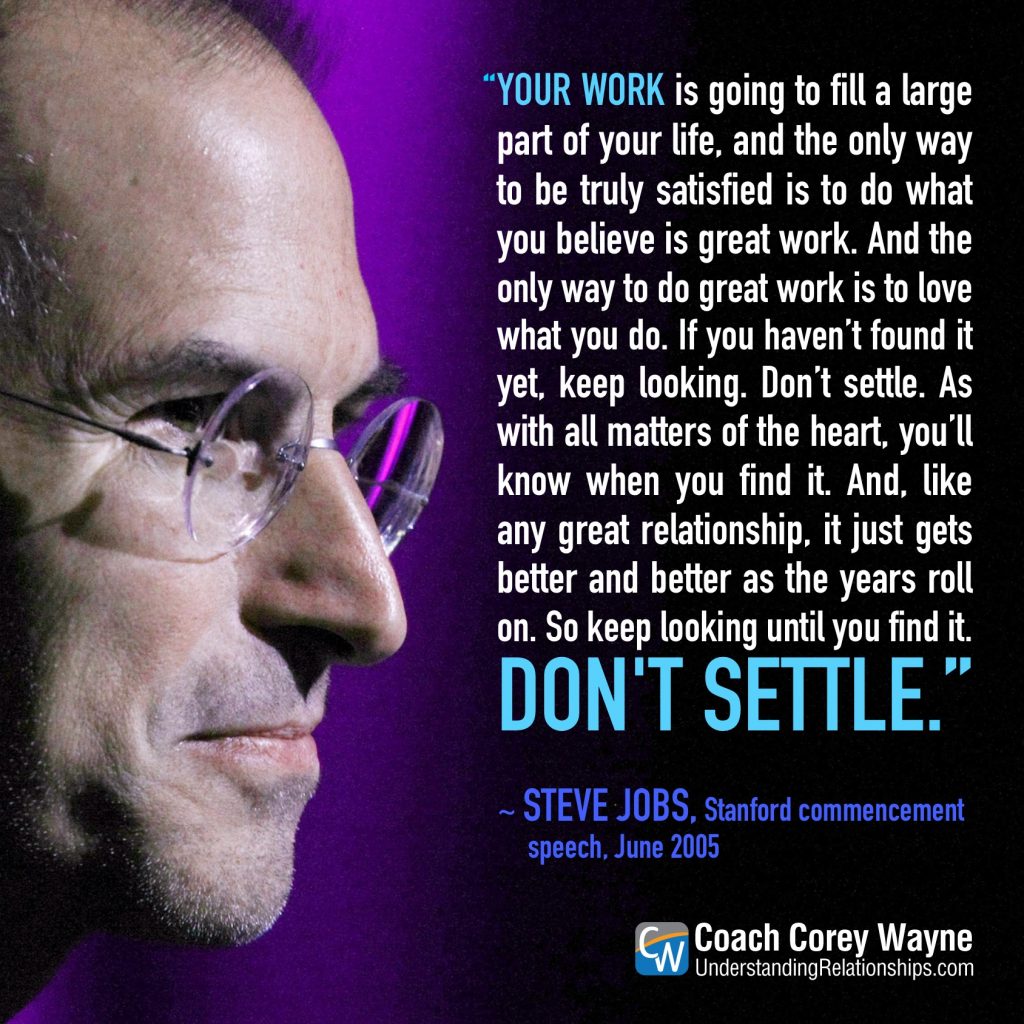
The Mac’s slow sales gave Sculley a chance to turn the tables. He won the Board’s confidence and got Jobs demoted and ostracized within his own company. When Jobs was forced out, it was a low point in his life.
“Sometimes life is going to hit you in the head with a brick. Don’t lose faith.” ~ Steve Jobs
In part 2, we’ll see how Jobs overcame being forced out of his own company and made a comeback, reaching even greater heights of success and technological innovation.
You can learn more by reading Corey Wayne’s book, “Mastering Yourself” for FREE on his website UnderstandingRelationships.com by subscribing to the newsletter.
Get the Book “How To Be A 3% Man”
*Amazon and the Amazon logo are trademarks of Amazon.com, Inc. or its affiliates. As an Amazon Associate I earn from qualifying purchases. **Free with a new Audible.com membership
*Amazon and the Amazon logo are trademarks of Amazon.com, Inc. or its affiliates. As an Amazon Associate I earn from qualifying purchases.
How to Be a 3% Man
Paperback | $29.99
How to Be a 3% Man
Hardcover | $49.99
How to Be a 3% Man
Paperback | $29.99
How to Be a 3% Man
Hardcover | $49.99
*Amazon and the Amazon logo are trademarks of Amazon.com, Inc. or its affiliates. As an Amazon Associate I earn from qualifying purchases.
Get the Book “Mastering Yourself”
*Amazon and the Amazon logo are trademarks of Amazon.com, Inc. or its affiliates. As an Amazon Associate I earn from qualifying purchases. **Free with a new Audible.com membership
*Amazon and the Amazon logo are trademarks of Amazon.com, Inc. or its affiliates. As an Amazon Associate I earn from qualifying purchases.
Mastering Yourself
Paperback | $49.99
Mastering Yourself
Hardcover | $99.99
Mastering Yourself
Paperback | $49.99
Mastering Yourself
Hardcover | $99.99
*Amazon and the Amazon logo are trademarks of Amazon.com, Inc. or its affiliates. As an Amazon Associate I earn from qualifying purchases.
Get the Book “Quotes, Ruminations & Contemplations”
*Amazon and the Amazon logo are trademarks of Amazon.com, Inc. or its affiliates. As an Amazon Associate I earn from qualifying purchases. **Free with a new Audible.com membership
*Amazon and the Amazon logo are trademarks of Amazon.com, Inc. or its affiliates. As an Amazon Associate I earn from qualifying purchases.
Quotes, Ruminations & Contemplations
Paperback | $49.99
Quotes, Ruminations & Contemplations
Hardcover | $99.99
*Amazon and the Amazon logo are trademarks of Amazon.com, Inc. or its affiliates. As an Amazon Associate I earn from qualifying purchases.
If you have a question you would like me to consider answering in a future Video Coaching Newsletter, you can send it (3-4 paragraphs/500 words max) to this email address: [email protected]
If you feel I have added value to your life, you can show your appreciation by doing one of the following three things:
- Make a donation to my work by clicking here to donate via PayPal anytime you feel I have added significant value to your life. You tip your favorite bartender, right? How about a buck... $2... $3... $5... $10... $20... what ever YOU feel its worth, every time you feel I have given you a good tip, new knowledge or helpful insight. Please feel free to donate any amount you think is equal to the value you received from my eBook & Home Study Course (audio lessons), articles, videos, emails, newsletters, etc.
- Referring your friends and family to this website so they can start learning and improving their dating and relationship life, happiness, balance and overall success in every area of their lives too!
- Purchase a phone/Zoom (audio only) coaching session for yourself or a friend by clicking here. Download the Amazon.com Kindle version of my book to your Kindle, Smartphone, Mac or PC for only $9.99 by clicking here. Get the iBook version for $9.99 from the iBookstore by clicking here. Get the Audio Book for FREE $0.00 with an Audible.com membership by clicking here or buy it for $19.95 at Amazon.com by clicking here. Get the iTunes Audio Book for $19.95 by clicking here. That way, you'll always have it with you to reference when you need it most. Thank you for reading this message!
From my heart to yours,

Corey Wayne
Author, Speaker, Peak Performance Coach, Entrepreneur
Click Anywhere on Today’s Instagram Image Below & You’ll Be Taken To My Instagram Page. When you get to my Instagram page, click the “Follow” Button so you can follow me on Instagram. I upload several new Instagram photos per week.




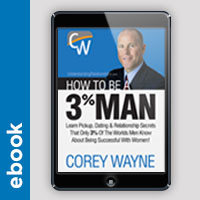





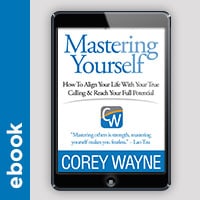
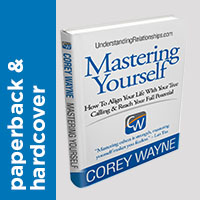


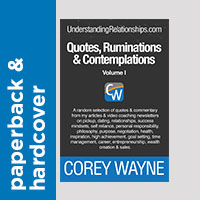
doug evans says
Steve Jobs was a successful entrepreneur but personally was a despicable a**hole. In the big picture of life I view him more of a failure.
Brian says
This was inspirational! Thank you. Going to read part 2 now.